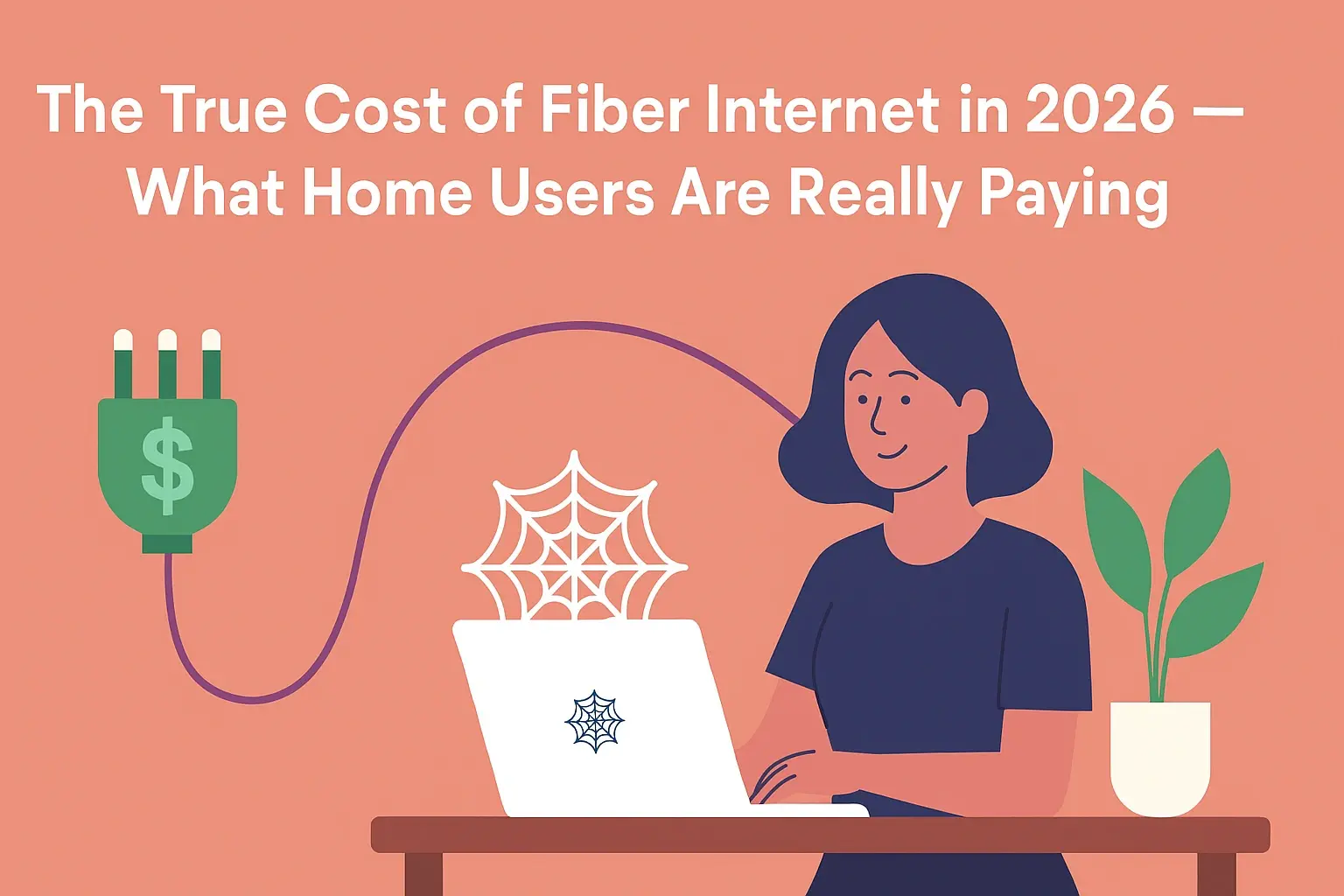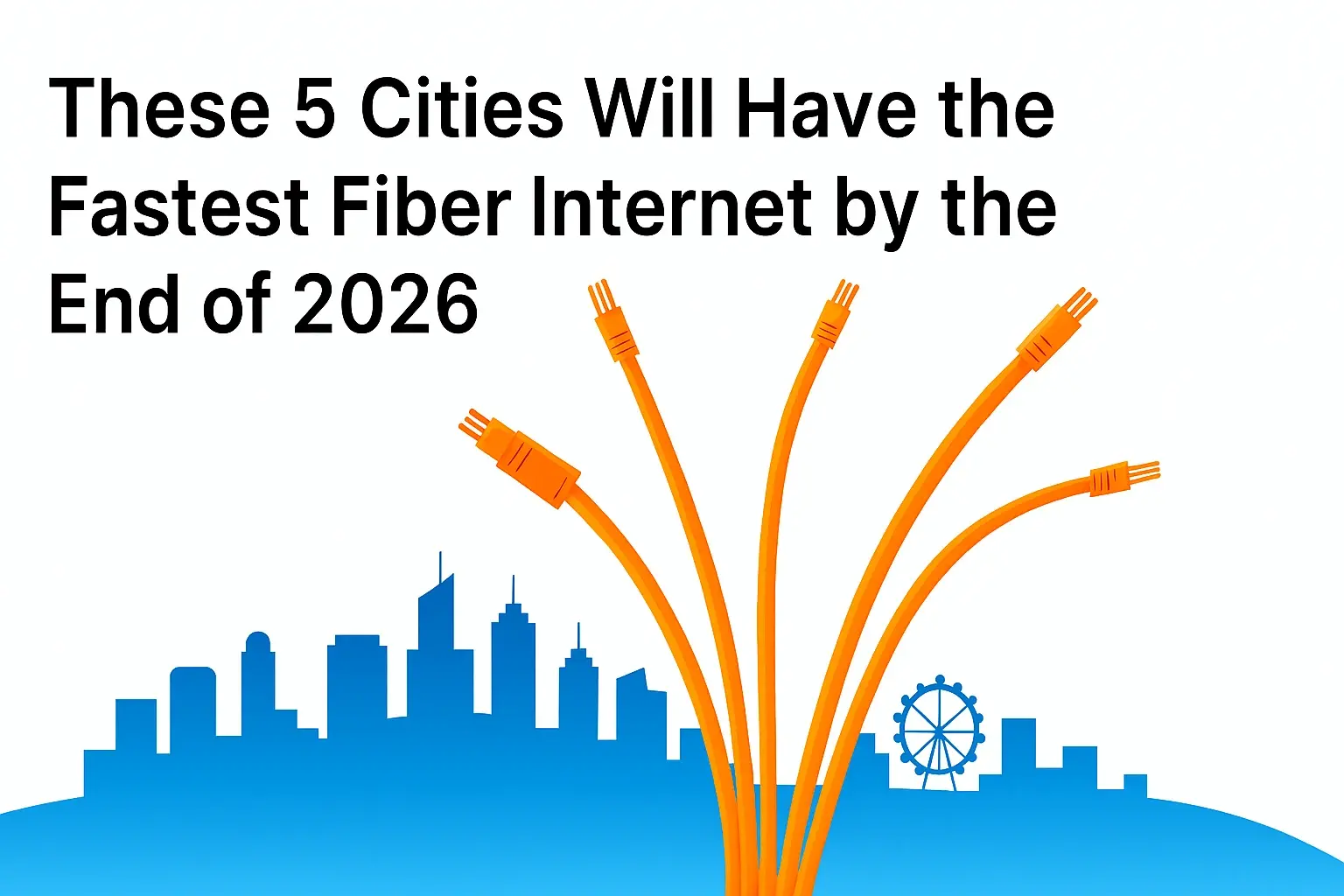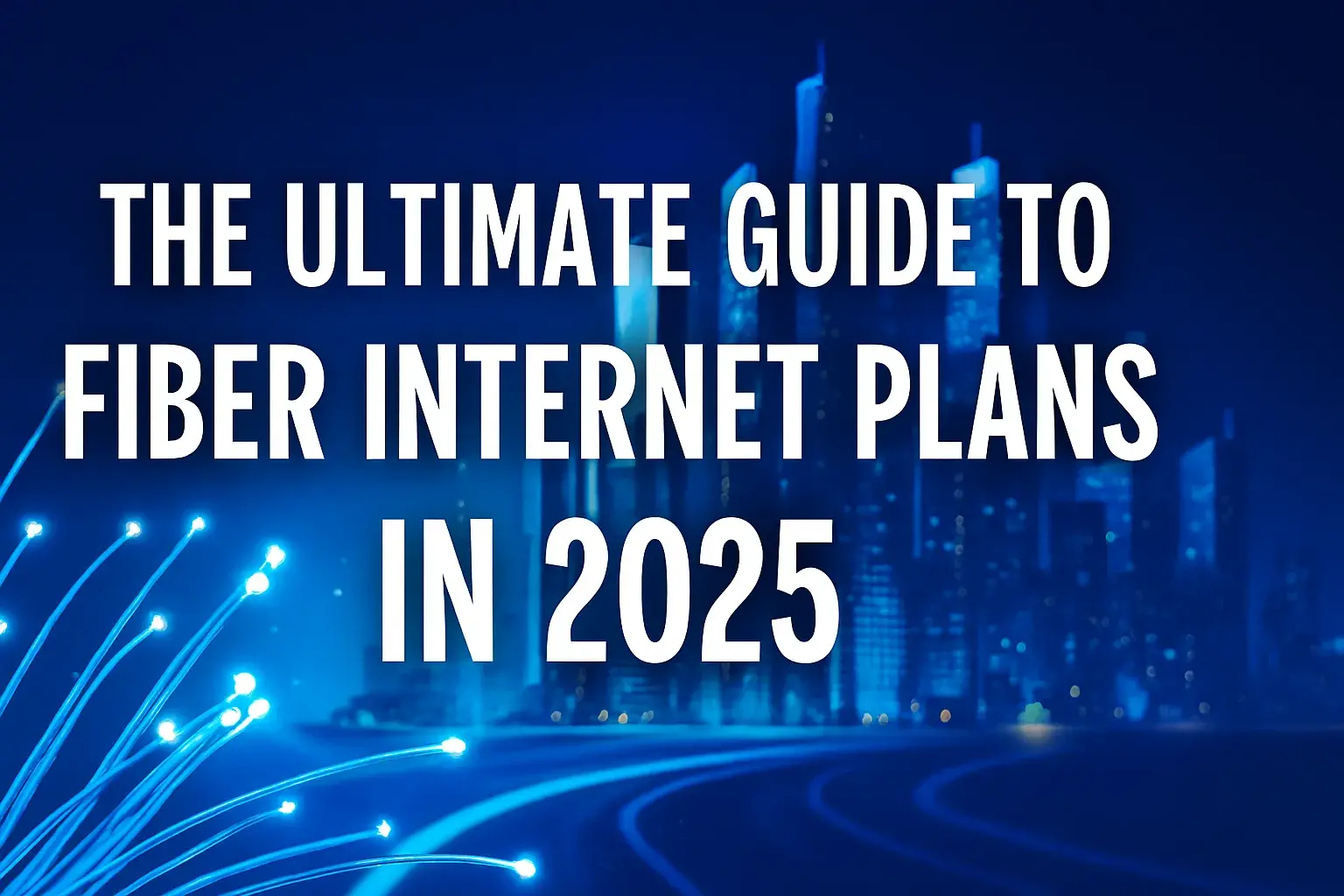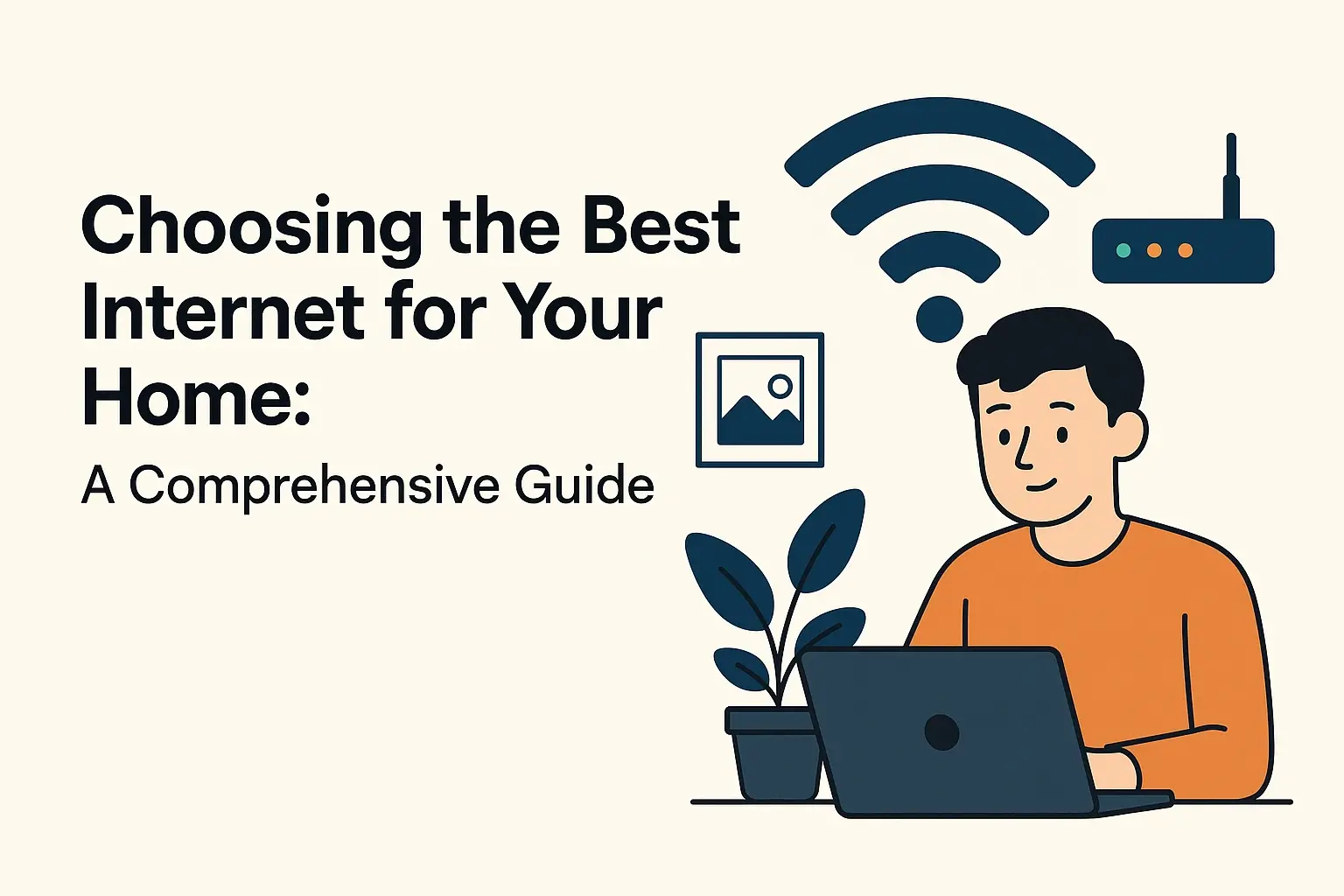The Complete guide to find fiber internet in my area
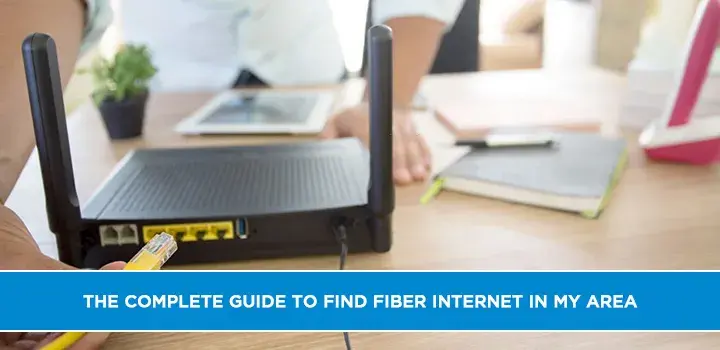
What is Fiber Internet and Why Does It Matter?
Are you tired of slow internet speeds and frustrating buffering? This comprehensive guide will help you discover if fiber internet is available in your area, explain its unparalleled benefits, and guide you through the selection process. Get ready to unlock a world of lightning-fast connectivity.
Why Fiber Internet is the Gold Standard
In the ever-evolving digital landscape, internet speed and reliability are no longer luxuries but necessities. While various internet technologies exist, fiber optic internet stands head and shoulders above the rest. But what exactly is fiber internet, and why is it so revolutionary? Let's dive in.
The Science Behind the Speed: How Fiber Works
Unlike traditional cable or DSL internet that uses copper wires to transmit data as electrical signals, fiber optic internet utilizes thin strands of glass or plastic, called optical fibers, to transmit data as pulses of light. This fundamental difference is the key to its superior performance. These light signals travel at incredible speeds, significantly faster and with less degradation over distance compared to electrical signals. The infrastructure involves laying these fiber optic cables directly to your home or business, a process known as "fiber to the premises" (FTTP) or "fiber to the home" (FTTH).
The Advantages of Light-Speed Connectivity
The benefits of fiber optic internet are numerous and impactful, transforming how we work, play, and connect.
- Unmatched Speed: Fiber internet offers symmetrical download and upload speeds, often reaching gigabit (1 Gbps) or even multi-gigabit (10 Gbps and beyond) speeds. This means downloads that used to take minutes now take seconds, and uploading large files is a breeze.
- Exceptional Reliability: Fiber optic cables are less susceptible to electromagnetic interference, weather conditions, and signal degradation compared to copper wires. This translates to a more stable and consistent connection, with fewer outages and disruptions.
- Lower Latency: Latency, the time it takes for data to travel from your device to the server and back, is significantly lower with fiber. This is crucial for real-time applications like online gaming, video conferencing, and live streaming, providing a smoother, more responsive experience.
- Future-Proofing: As our reliance on bandwidth-intensive applications continues to grow, fiber optic technology is built to handle future demands. Its capacity is virtually limitless, ensuring you won't be bottlenecked by your internet connection anytime soon.
- Increased Bandwidth: Fiber can carry much more data simultaneously than traditional methods. This means multiple devices in your household can stream, game, and browse without experiencing a slowdown.
Your Step-by-Step Guide to Finding Fiber Internet
Now that you understand the immense advantages of fiber, the next crucial step is to determine its availability in your specific location. This process can sometimes feel daunting, but by following these steps, you can efficiently uncover your fiber internet options.
Step 1: Define Your Internet Needs
Before you start searching, it's essential to understand what you need from your internet service. Consider the following:
- Number of Users: How many people will be using the internet simultaneously in your household?
- Primary Activities: What do you primarily use the internet for? (e.g., streaming HD/4K video, online gaming, video conferencing for work, basic browsing, smart home devices).
- Device Count: How many devices will be connected to your network at any given time?
- Speed Requirements: Based on your activities, what download and upload speeds would be ideal? For most households, speeds ranging from 100 Mbps to 1 Gbps are sufficient, but heavy users might require more.
Understanding these factors will help you narrow down the plans and providers that best suit your lifestyle and budget. For instance, a family of four with multiple gamers and streamers will have vastly different needs than a single individual who primarily browses the web.
Step 2: Utilize Online Availability Tools
The most direct way to check for fiber internet in your area is by using online availability checkers provided by major internet service providers (ISPs).
- Major ISP Websites: Visit the websites of prominent ISPs known for offering fiber internet. These often include companies like Verizon Fios, AT&T Fiber, Google Fiber, Frontier Fiber, CenturyLink Fiber, and regional providers. Look for sections like "Check Availability," "Is Fiber Available Here?," or "Find Services." You'll typically need to enter your street address, city, and zip code.
- Third-Party Aggregators: Several websites aggregate ISP availability information. While these can be a good starting point, always cross-reference the information with the ISP's official website for the most accurate and up-to-date results. Examples include BroadbandNow, HighSpeedInternet.com, and Allconnect.
Pro Tip: Be aware that availability can change rapidly. ISPs are constantly expanding their fiber networks. If fiber isn't available today, check back in a few months.
Step 3: Research Local and Regional Providers
Don't overlook smaller, local, or regional ISPs. These providers often serve specific communities and may offer competitive fiber plans where national carriers do not.
- Community Websites and Forums: Check your local town or city government websites, community forums, or even local social media groups. Residents often discuss new service installations and available providers.
- Ask Neighbors: If you have neighbors who have recently upgraded their internet or have exceptionally fast speeds, inquire about their provider and service type.
Step 4: Understand Different Fiber Deployment Types
Not all "fiber" services are created equal. It's important to understand the different levels of fiber deployment:
- Fiber to the Home (FTTH) / Fiber to the Premises (FTTP): This is the gold standard. The fiber optic cable runs directly from the provider's central office all the way to your home or business. This offers the highest speeds and lowest latency.
- Fiber to the Cabinet (FTTC) / Fiber to the Node (FTTN): In this setup, fiber optic cable runs to a local cabinet or node in your neighborhood. The final connection from the cabinet to your home is made using existing copper infrastructure (like DSL). While faster and more reliable than pure DSL, it won't offer the full gigabit speeds of FTTH.
- Hybrid Fiber-Coaxial (HFC): This is common for cable internet providers. Fiber optic cable runs to a neighborhood hub, and then coaxial cable is used for the final connection to your home. This offers good speeds, often competitive with lower-tier fiber plans, but typically not the symmetrical uploads or the ultra-low latency of FTTH.
When checking availability, try to ascertain if the provider offers true FTTH/FTTP service for the most optimal experience.
Step 5: Contact Providers Directly
If online tools are inconclusive or you have specific questions, don't hesitate to call the customer service lines of potential providers. They can often provide the most accurate information about service availability at your exact address and discuss available plans.
Step 6: Consider Installation and Equipment
Once you've identified available fiber providers, inquire about installation processes and any required equipment.
- Installation Fees: Some providers charge an installation fee, while others may waive it as a promotional offer.
- Equipment Rental/Purchase: You may need a modem or router compatible with fiber. Some providers include this with their service, while others charge a monthly rental fee or allow you to purchase your own. Ensure any purchased equipment is compatible.
- Installation Timeline: The installation process for fiber can sometimes take longer than other technologies, especially if new lines need to be run to your property.
Key Factors When Choosing a Fiber Provider
With multiple fiber options potentially available, selecting the right provider requires careful consideration beyond just speed. Here’s what to look for:
Pricing and Contract Terms
Fiber internet plans can vary significantly in price. Look beyond the introductory promotional rates to understand the long-term cost.
- Monthly Cost: Compare the standard monthly price after any promotional periods expire.
- Contract Length: Many providers require a 12- or 24-month contract. Understand the early termination fees if you need to break the contract. Some providers offer no-contract options, which can offer more flexibility.
- Hidden Fees: Be vigilant about potential installation fees, equipment rental fees, activation fees, or data overage charges (though data caps are rare with fiber).
Speed Tiers and Symmetrical Uploads
While fiber is inherently fast, the advertised speeds can differ.
- Download vs. Upload: The biggest advantage of fiber is symmetrical speeds, meaning your upload speed is as fast as your download speed. This is crucial for video calls, uploading large files, and online gaming. Always confirm if the advertised speeds are symmetrical.
- Speed Tiers: Providers offer various speed tiers (e.g., 100 Mbps, 500 Mbps, 1 Gbps, 2 Gbps, 10 Gbps). Choose a tier that matches your usage needs identified in Step 1. A 1 Gbps connection is generally more than enough for most households, but power users might consider higher tiers.
Customer Service and Reliability Ratings
Speed is important, but so is the overall experience.
- Customer Reviews: Research online reviews and consumer reports for customer satisfaction ratings regarding technical support, installation experience, and billing.
- Uptime Guarantees: While fiber is highly reliable, some providers offer service level agreements (SLAs) or uptime guarantees, especially for business customers.
Bundling Options
Some providers offer bundles that include internet, TV, and phone services.
- Cost Savings: Bundling can sometimes lead to cost savings compared to purchasing services separately.
- Convenience: Having a single bill and provider for multiple services can simplify household management.
- Evaluate Necessity: Ensure you actually need the bundled services. Sometimes, unbundled services can be more cost-effective if you only require internet.
Data Caps and Usage Policies
Fortunately, data caps are becoming increasingly rare with fiber internet, especially for residential plans. However, it's always wise to confirm.
- Unlimited Data: Most fiber providers offer unlimited data with no throttling.
- Check the Fine Print: In the unlikely event a provider has data caps, understand the limits and the penalties for exceeding them.
Promotional Offers and Discounts
ISPs frequently offer introductory promotions to attract new customers.
- Introductory Pricing: Be aware of how long these lower prices last and what the regular price will be afterward.
- Sign-Up Bonuses: Look for sign-up bonuses, gift cards, or free equipment offers.
- Autopay and Paperless Billing: Many providers offer small discounts for setting up automatic payments and receiving bills electronically.
Comparison Table: Fiber vs. Other Technologies (2025 Outlook)
To further illustrate the advantages, here's a comparison of fiber optic internet with other common technologies, reflecting current trends and projected 2025 capabilities.
| Feature | Fiber Optic | Cable (HFC) | DSL | 5G Home Internet |
|---|---|---|---|---|
| Typical Download Speeds (2025) | 1 Gbps - 10 Gbps+ | Up to 1 Gbps (shared) | Up to 100 Mbps | 100 Mbps - 1 Gbps (variable) |
| Typical Upload Speeds (2025) | 1 Gbps - 10 Gbps+ (Symmetrical) | 20 Mbps - 100 Mbps (Asymmetrical) | Up to 10 Mbps (Asymmetrical) | 20 Mbps - 100 Mbps (variable) |
| Latency | Very Low (5-20 ms) | Low (20-50 ms) | Moderate (30-80 ms) | Variable (30-70 ms) |
| Reliability | Very High | High | Moderate | Variable (dependent on signal strength) |
| Bandwidth Capacity | Extremely High | High | Low to Moderate | Moderate to High |
| Susceptibility to Interference | None | Low | Moderate to High | Moderate (wireless interference) |
| Availability (2025) | Expanding rapidly, but not universal | Widespread | Widespread (declining in some areas) | Growing, especially in urban/suburban areas |
Note: Speeds and performance can vary based on specific provider, plan, network congestion, and local infrastructure. The 5G Home Internet category is dynamic and its performance is highly dependent on network availability and signal strength.
Debunking Common Fiber Internet Myths
Despite its clear advantages, some misconceptions about fiber optic internet persist. Let's address them.
Myth 1: Fiber Internet is Prohibitively Expensive
While fiber was once considered a premium service, its cost has become increasingly competitive, especially when considering the value it provides. As deployment expands, prices are dropping. Furthermore, the long-term cost of ownership can be lower due to higher reliability and fewer upgrade needs. Many providers now offer plans comparable in price to high-speed cable or even DSL. For example, many 1 Gbps fiber plans are now available for under $80 per month, with some regional providers offering even lower introductory rates.
Myth 2: Fiber Installation is Disruptive and Costly
While installation can sometimes require new lines to be run, providers are becoming more efficient. In many cases, existing conduit or utility poles can be used, minimizing disruption. Many ISPs offer free installation or heavily discounted rates as part of new customer promotions. The cost and invasiveness of installation are often less than perceived, and the long-term benefits of fiber often outweigh the initial setup.
Myth 3: Fiber is Only for Businesses or Tech Enthusiasts
This is no longer true. Fiber to the home (FTTH) is increasingly common in residential areas, catering to the growing demand for bandwidth from households engaged in streaming, online learning, remote work, and gaming. The ease of use and plug-and-play nature of modern fiber modems means anyone can benefit from its speed and reliability.
Myth 4: My Area Doesn't Have Enough Demand for Fiber
The demand for high-speed, reliable internet is universal. As more people work from home, rely on cloud services, and stream high-definition content, the need for robust infrastructure grows. ISPs are investing in fiber expansion based on projected demand and technological advancements, not just current, easily quantifiable demand. Keep checking availability, as networks are constantly being built out.
Myth 5: Fiber is Fragile and Easily Damaged
Fiber optic cables are surprisingly robust. While the glass strands themselves are delicate, they are encased in protective layers that make them durable enough for underground burial and outdoor installation. They are also immune to electrical surges and lightning strikes, which can affect copper-based services.
The Future of Fiber Internet and What to Expect
The trajectory of fiber optic internet is one of continuous growth and innovation. Several trends are shaping its future and will impact how you access and use the internet in the coming years.
Continued Network Expansion
The biggest trend is the ongoing expansion of fiber networks. Governments worldwide are investing in broadband infrastructure, and private ISPs are aggressively deploying fiber to meet demand. Expect to see fiber availability increase significantly in suburban and even rural areas over the next decade. Initiatives like the Broadband Equity, Access, and Deployment (BEAD) Program in the United States are specifically designed to fund this expansion.
Higher Speed Tiers and New Technologies
The speeds offered by fiber are only going to increase. While 1 Gbps is common today, 2 Gbps, 10 Gbps, and even higher symmetrical speed tiers are becoming more accessible. Technologies like XG-PON and XGS-PON are enabling these multi-gigabit speeds, and research into even faster standards continues.
Increased Competition
As fiber infrastructure matures, competition among providers is expected to intensify. This competition will likely drive down prices, improve service offerings, and lead to more innovative plans and bundles. New players, including municipal broadband initiatives and smaller regional providers, will continue to emerge, offering consumers more choices.
Integration with 5G and Smart Technologies
Fiber optic networks will serve as the backbone for next-generation wireless technologies like 5G and future 6G networks. The high capacity and low latency of fiber are essential for supporting the dense network of small cells required for advanced wireless services. This synergy will power the growth of the Internet of Things (IoT), smart cities, autonomous vehicles, and immersive augmented and virtual reality experiences.
Focus on Symmetrical Speeds and Low Latency
The demand for symmetrical upload and download speeds will continue to grow as cloud-based applications, remote collaboration tools, and content creation become more prevalent. Low latency will remain critical for real-time applications, making fiber the preferred choice for gamers, remote workers, and anyone requiring a responsive online experience.
Sustainability and Energy Efficiency
Fiber optic cables consume significantly less energy than copper cables for data transmission over long distances. As the world focuses more on sustainability, the energy efficiency of fiber infrastructure will become an even more significant advantage.
What This Means for You
For consumers, the future of fiber means more widespread availability, faster speeds, potentially lower prices due to competition, and a more robust and reliable internet experience. It means being better equipped for the demands of tomorrow's digital world, from immersive entertainment and advanced gaming to seamless remote work and the burgeoning smart home ecosystem.
Conclusion
Navigating the landscape of internet service providers can seem complex, but the pursuit of fiber optic internet is a worthwhile endeavor for anyone seeking the pinnacle of online performance. We've explored what fiber is, why it's superior to other technologies, and provided a clear, step-by-step process for finding fiber internet in your area. Remember to define your needs, utilize online tools and local resources, and carefully consider pricing, contract terms, and provider reliability. By understanding the nuances of different fiber deployment types and debunking common myths, you can make an informed decision. The future is undeniably fiber-driven, promising ever-increasing speeds and capabilities. Don't settle for less; take the steps outlined in this guide to secure a lightning-fast, reliable fiber connection and unlock the full potential of the digital world for years to come.
